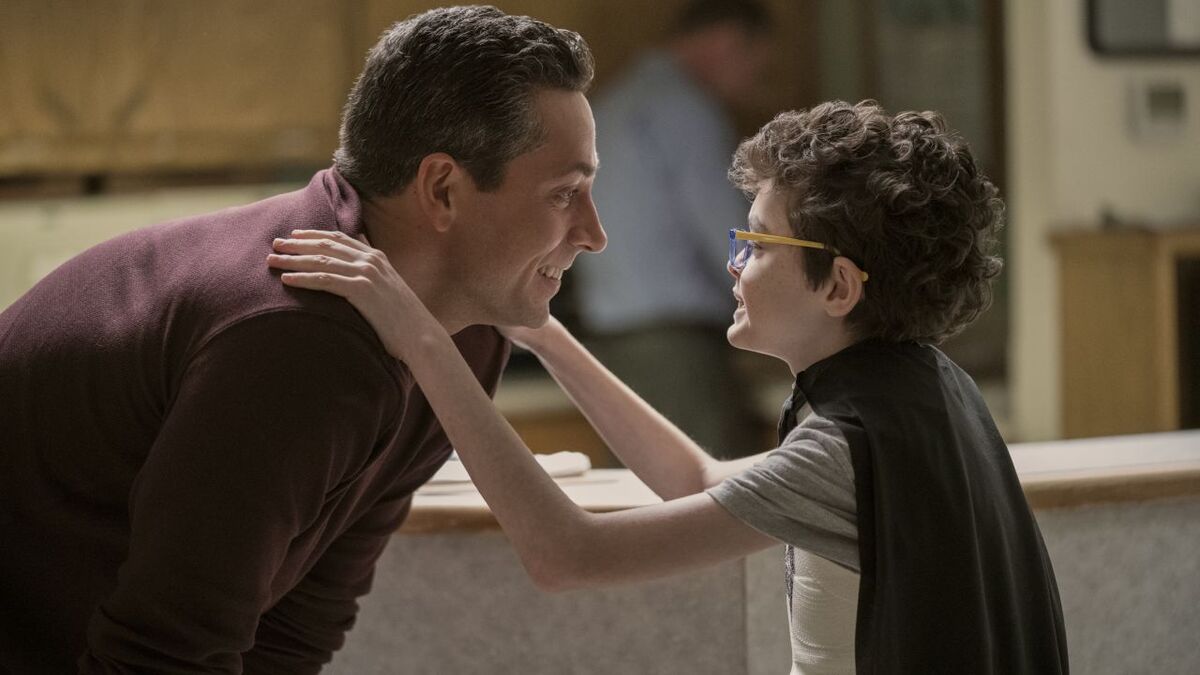
Furthermore, Mike’s arrival at Stacey’s home in the middle of the night is harsh and aggressive, and the camera swoops in to follow Mike as he rushes to and away from her door, moving like he does. The distant howls and muffled laughs of Mike gestating in the bar, as he waits to pounce on Philly cops Hoffman and Fenske, drew us into his woozy state of mind. Finally, after the last commercial break, Bernstein begins the final scenes by slowly creeping toward a distant Mike from the grimy darkness of the local cop drinking hole. He then finishes the episode in a shot that backs away from Mike, sitting in a tableau as darkness surrounds him. In between these shots is a descent into film noir that is as poignant as it is pitch black.
Much of the episode is lit rather drearily, filling Mike’s face with shadow. It is not too often that television shows put an effort into making the episode’s protagonist so hard to see. Usually, three-point lighting is a director’s friend, giving clarity to the plotting and character expressions. However, the frequent glimpses of Mike in a dismal light are deliberate. The darkness cast upon him is a mirror of the doom he walks around with. The full light on his face during his anguished, tearful confession to Stacey at the end signifies a coming to terms with his actions. (Regardless, darkness is still in the air, hovering not far from him in that hypnotic final shot.)
Beyond the noir, there is still a bit of levity in this hour of Better Call Saul, courtesy of the newly minted attorney for the aged. Cracking wise about his Matlock-inspired get-up, Jimmy is more exhausted by the detail of Matty’s mysterious death – as well as the “third-rate Marx Brothers routine” Mike imposes on him, so that Mr. Ehrmantraut can pocket one of the detectives’ notepads. (This sequence of events is a less clunky info dump about one character’s shrouded past than Chuck’s medical meanderings from “Alpine Shepherd Boy.”) Bernstein, ever the patient director, restrains the action in Jimmy’s inevitable coffee spill. From Jimmy’s slight hesitation as he grabs the cup to Mike’s sleight of hand, it is a beautifully configured sequence, sharp and subtle – and done in long shot with a long take.
If there are any caveats with this compelling episode, it is perhaps in the familiarity of some of the noirish beats. Mike’s menacing line to Hoffman and Fenske – “I knew it was you” – is a Godfather callback. The pulpy, descriptive sentences Mike says in voice-over (before the reveal that he is actually speaking to Stacey) also complies with the conventions of film noir. While these touches are refreshing for a show with the casual pace of Better Call Saul, some of the dialogue in the climactic scene is stale. (Regardless, there were a few gems: “It’s like killing Caesar: everybody’s guilty.”) Even if the lines may remind one of more crackling thrillers, Banks’ spare delivery – slowly shifting to a breaking voice, steeped in regret – brings a gravitas to the drama that is almost mesmerizing enough to make one forget about the common genre beats in the dialogue.
This week’s episode will forever be remembered as a poignant, penetrating glimpse into the weary world of Breaking Bad’s (and now Better Call Saul‘s) most lovably laconic character. His conviction of how his son wouldn’t steep to the dirty lows Mike had dug himself into creates a powerful backstory that will be hard to forget. Hands down, this was Banks’ finest hour, as it showed us how Mike’s vacant stare was not just the result of being a lone wolf, but due to devastating familial heartbreak.
“Five-O” was a remarkable tragedy, tenderly emoted and terrifically performed.










Published: Mar 10, 2015 12:05 am